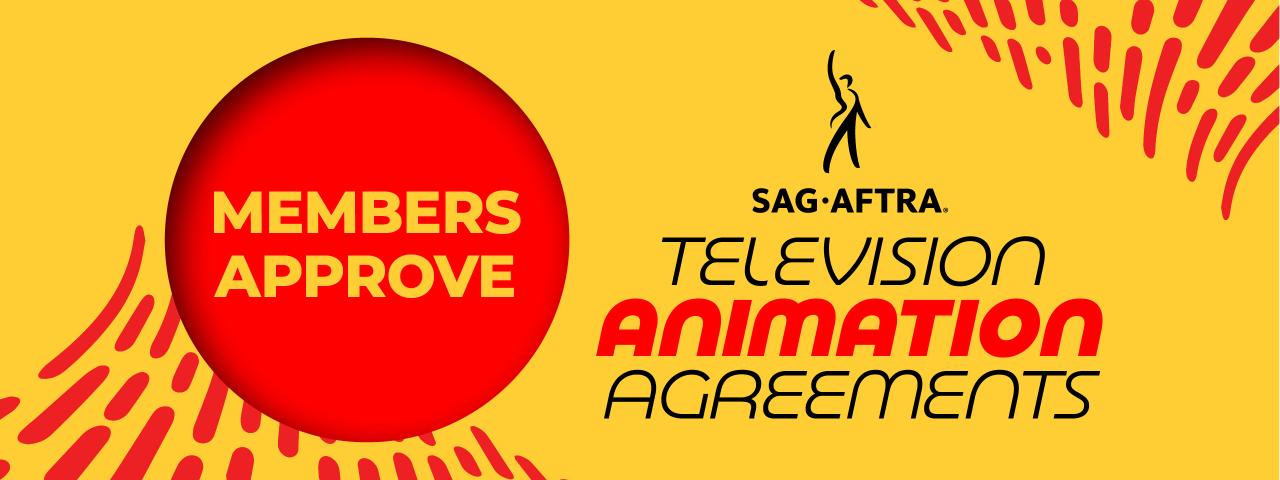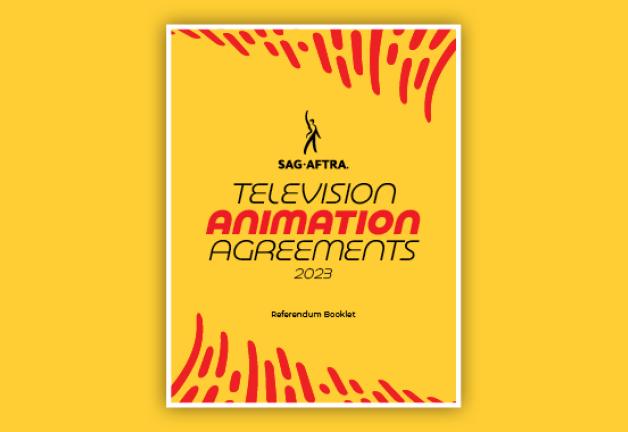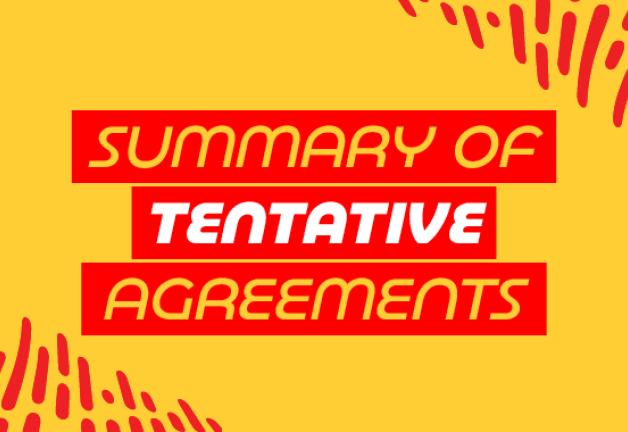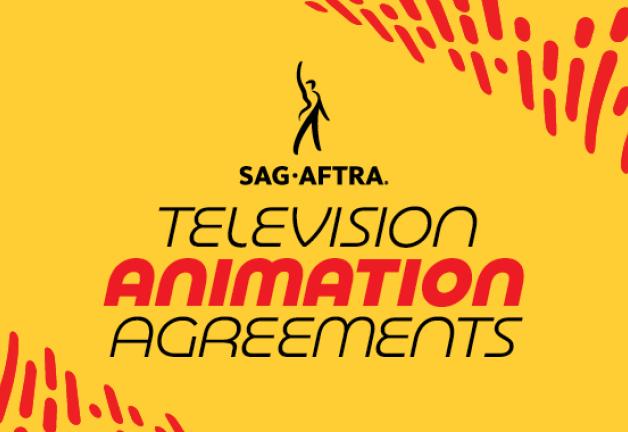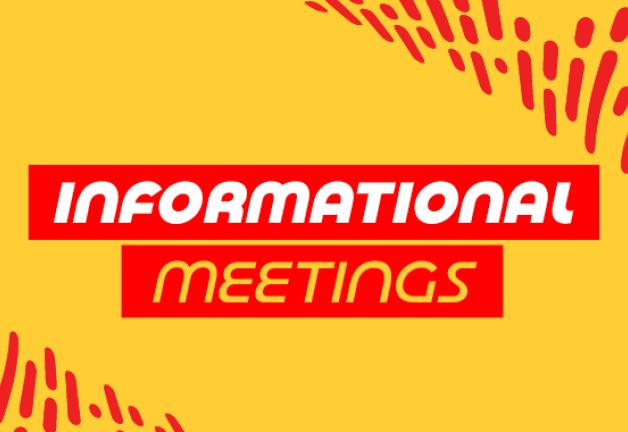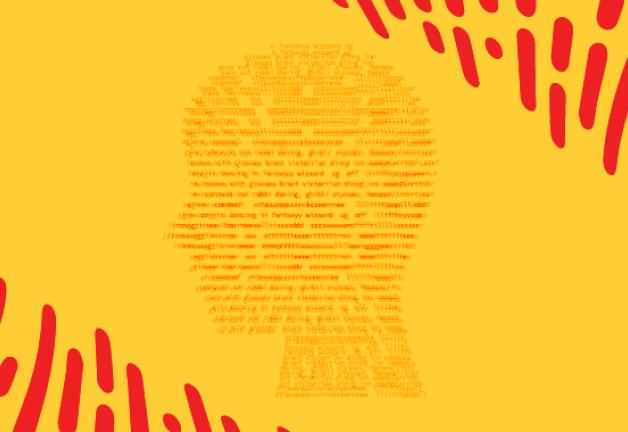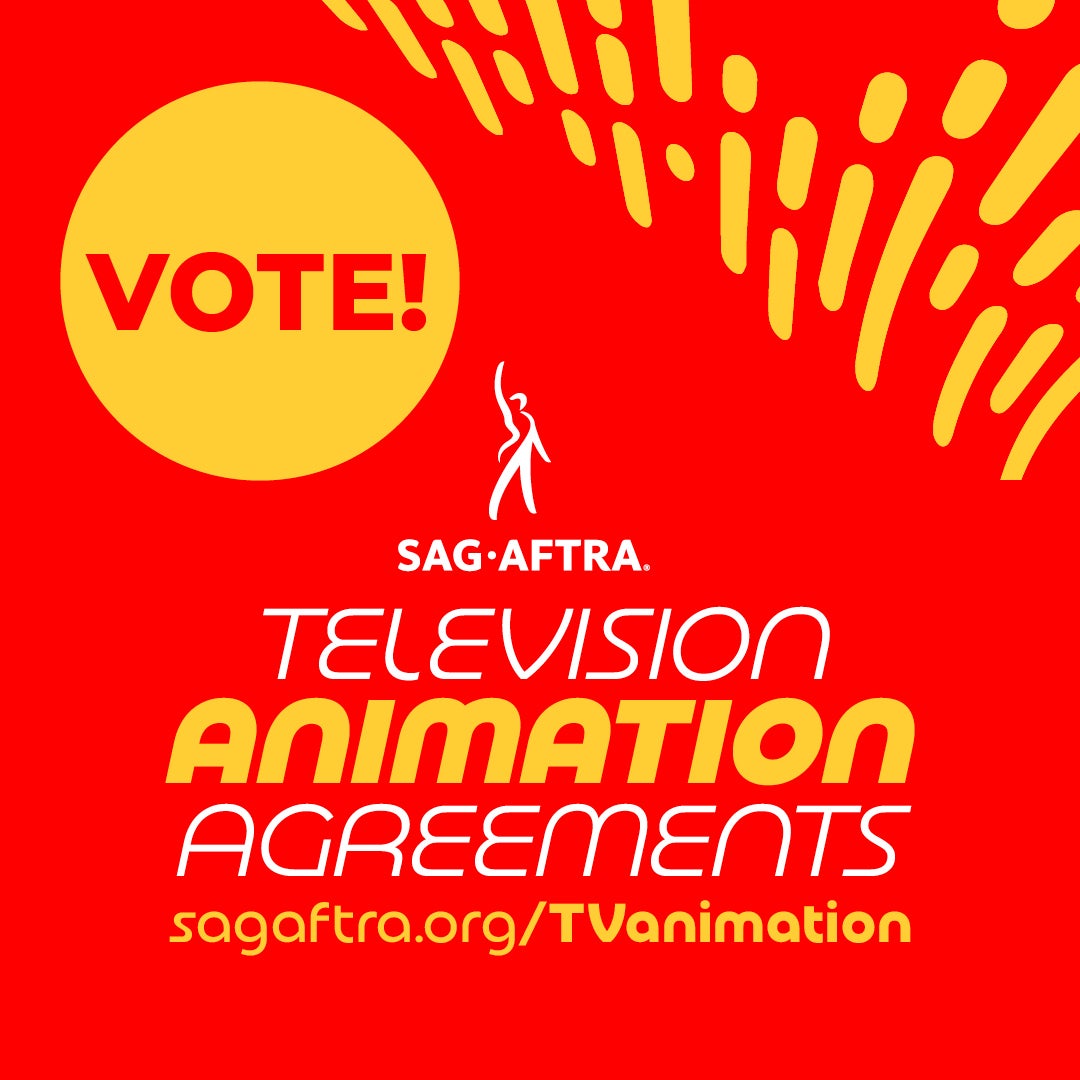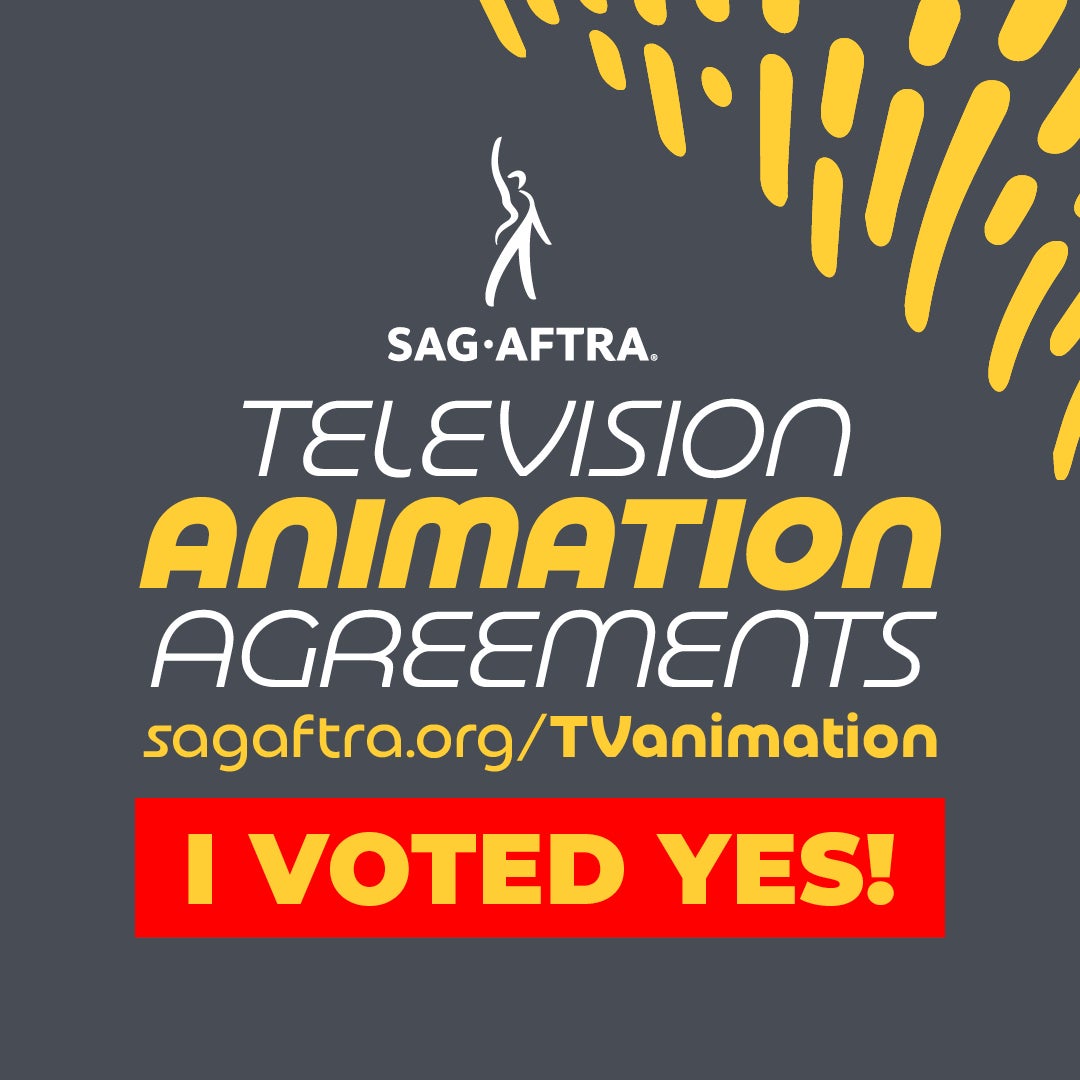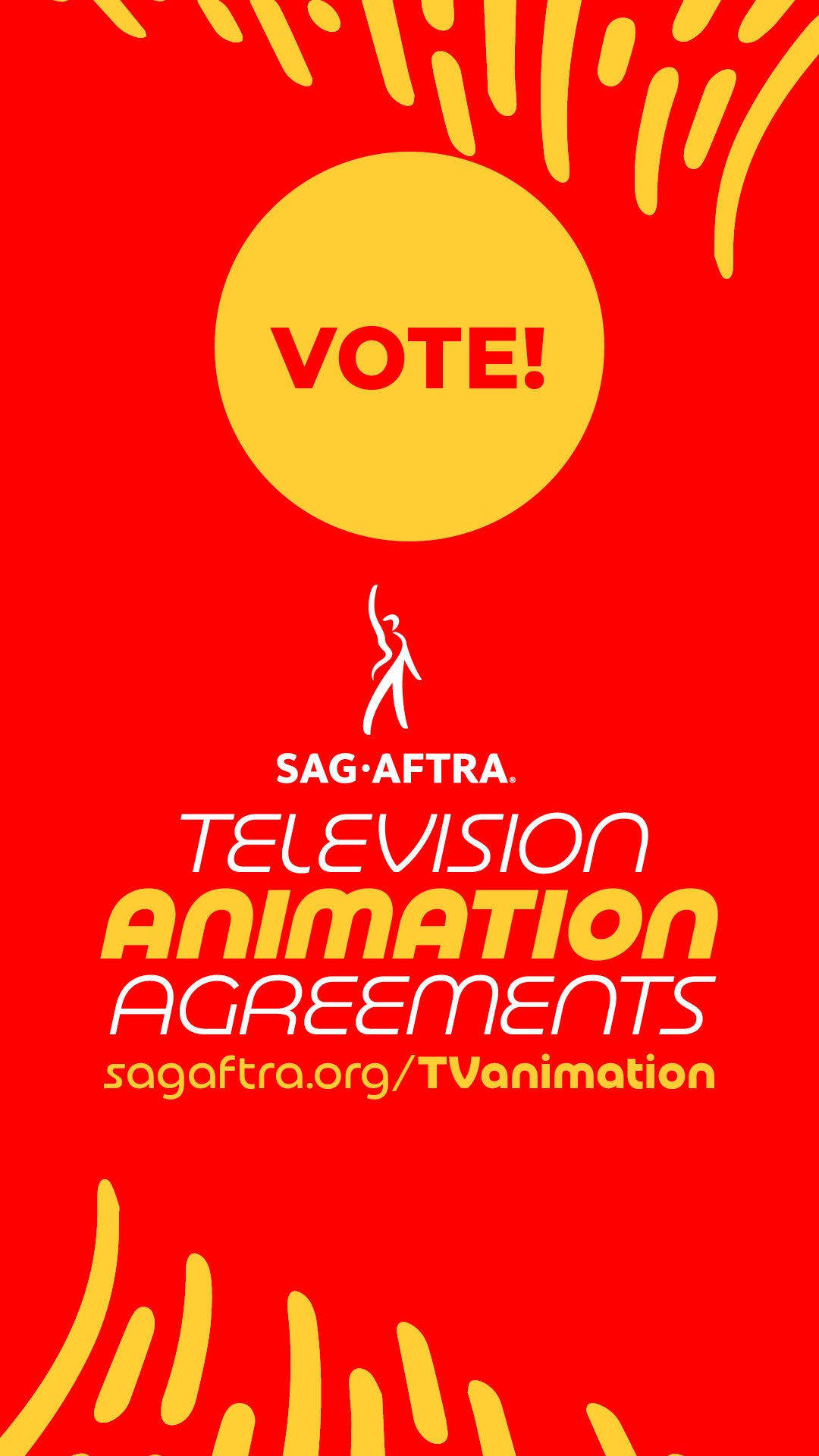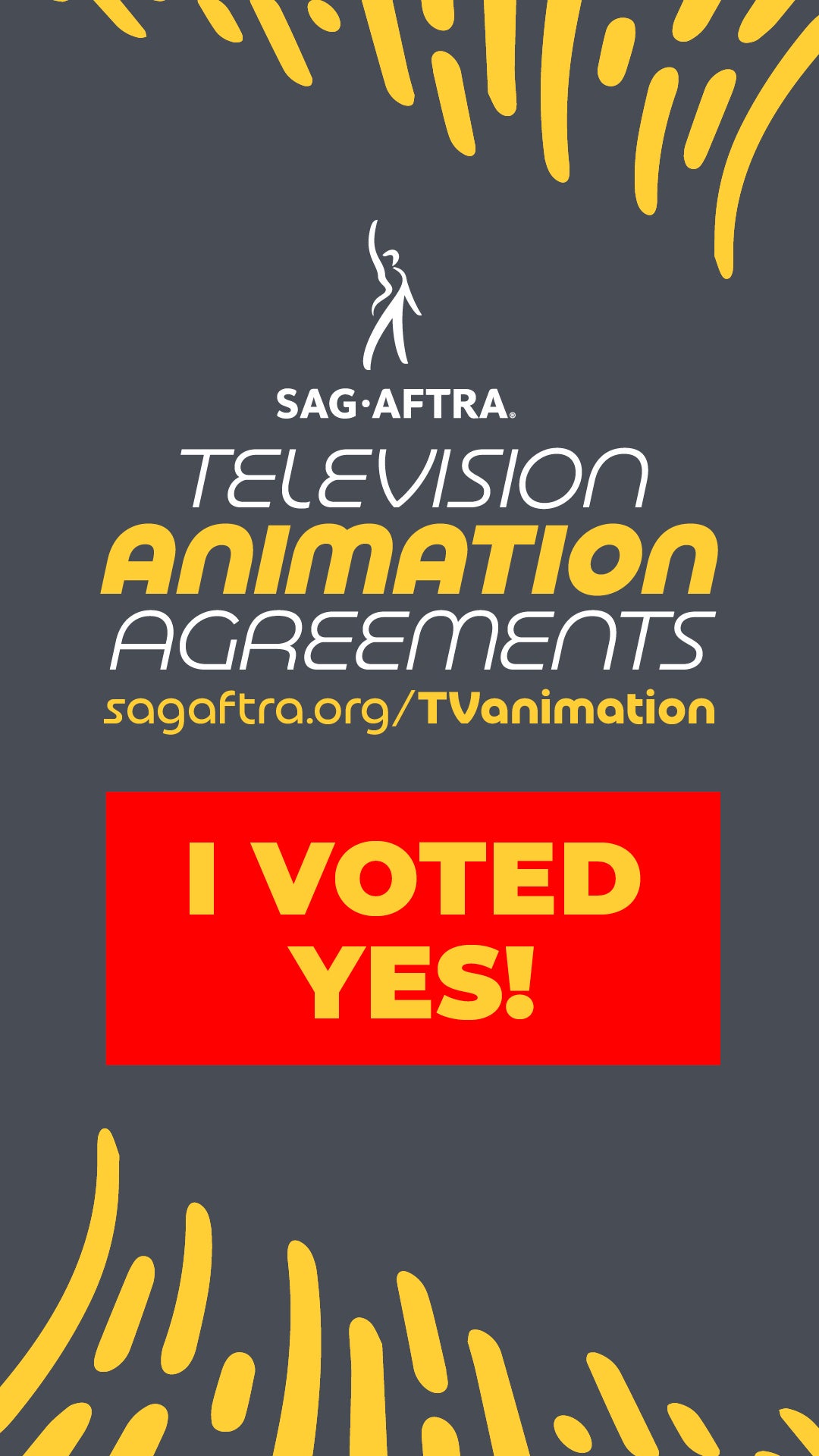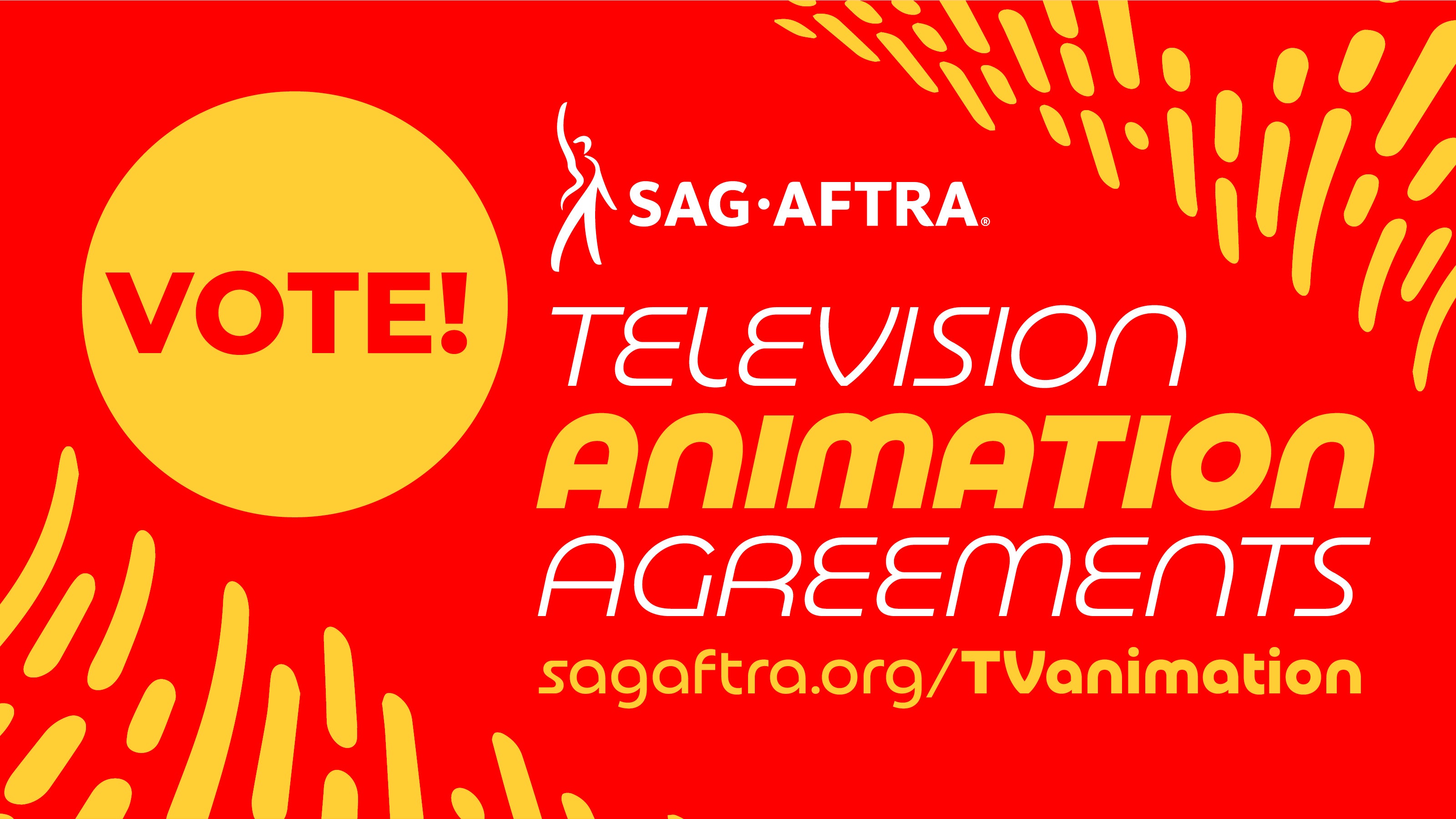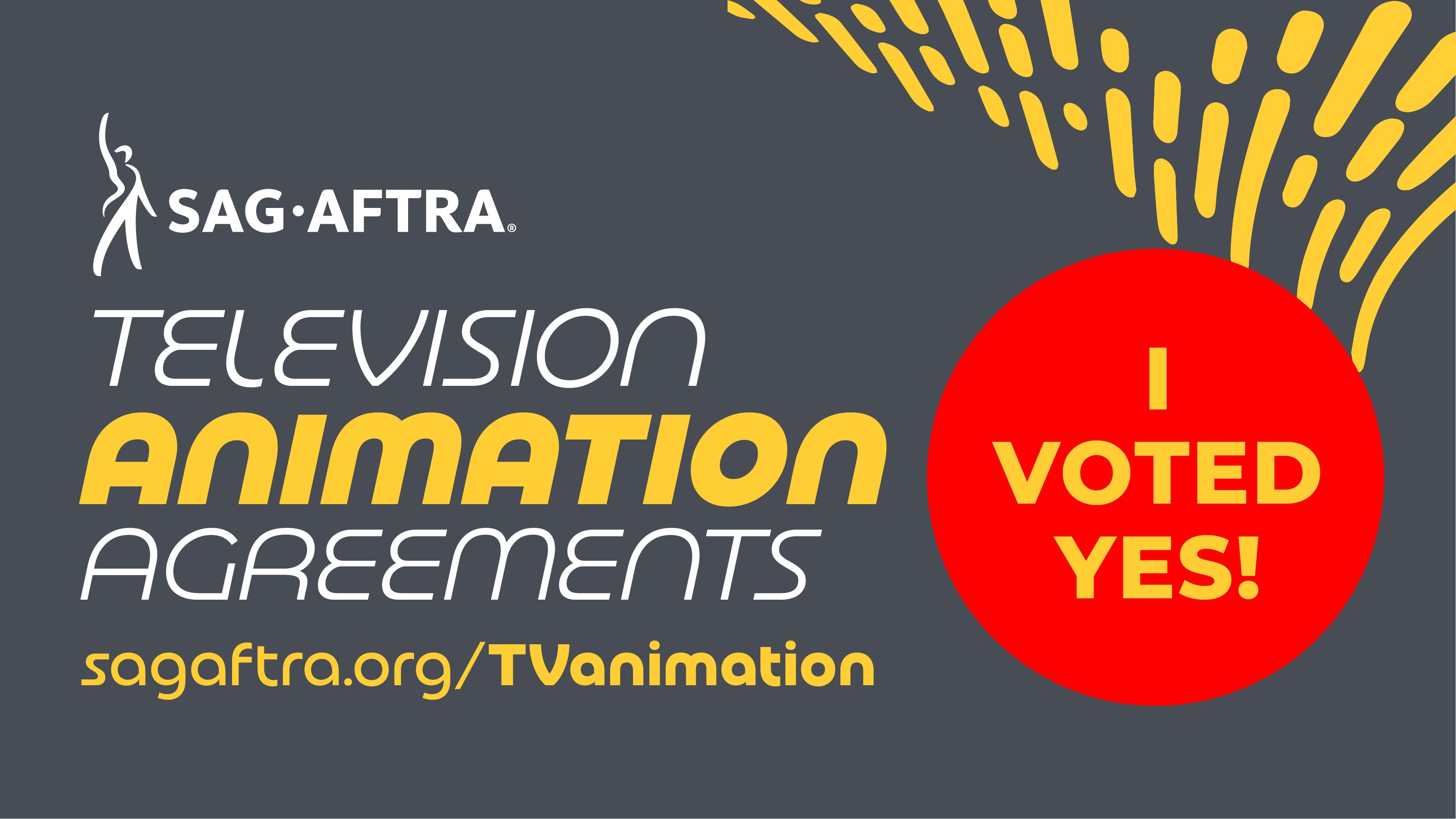SAG-AFTRA Members Ratify TV Animation Agreements
In national voting completed today, members of SAG-AFTRA ratified the 2023 Television Animation Agreement and the 2023 Basic Cable Animation Agreement with the Alliance of Motion Picture and Television Producers. Members approved the new three-year contracts by a vote of 95.52% to 4.48%.
The contracts provide strong protections around the use of artificial intelligence and a pattern-busting 7% wage increase that applies retroactively to July 1, 2023.
TV Animation Agreements Go to Members for Ratification
The SAG-AFTRA 2023 Television Animation Agreements have been approved by the SAG-AFTRA Executive Committee, and the agreements will now be sent to members for ratification. The three-year contracts benefited from gains made to the TV/Theatrical Contract after the 118-day strike, particularly in the area of artificial intelligence protections.
“We were able to ride the wave of our strike victory to secure a better deal for members. That momentum paid off in terms of substantial wage increases, more than $3 million in back pay, two new holidays and the first SAG-AFTRA animation voiceover contract with artificial intelligence protections and gains,” said SAG-AFTRA National Executive Director & Chief Negotiator Duncan Crabtree-Ireland.
Informational Meetings
FAQs
-
The Television and Basic Cable Animation Agreements cover animated series, animated multi-part closed-end pictures (mini-series), and animated long-form movies made for initial exhibition on television (including basic cable) and new media. These agreements do not cover theatrical animated movies.
-
All eligible affected members were mailed a postcard on Friday, March 1, 2024, with instructions and a PIN number on how to vote online at vote.ivsballot.com/TVanimation or how to request a paper ballot. If necessary, you can retrieve your PIN at the voting website by clicking “Find My PIN.”
Ballots — whether submitted online or by mail — must be received by 5 p.m. PDT on Friday, March 22, 2024.
-
Yes, there will be two informational meetings:
Thursday, March 7, 2024, from 3–5 pm PT/5–7 pm CT/6–8 pm ET
Thursday, March 7, 2024, from 7–9 pm PT/9–11 pm PT/10 pm–12 pm ET.
Both meetings will be held via Zoom.
Please visit sagaftra.org/TVanimation for more information and to register. -
If the union fails to ratify the new agreements, the National Board and TV Animation Negotiating Committee will have to meet to decide the next steps, which could include approaching the AMPTP about additional negotiations. The 2020 Agreements would remain in effect until further action is taken.
-
If the tentative agreement is ratified, the agreements will go into effect the first Sunday following the business day on which the AMPTP is notified of ratification. However, some terms will have their own specific effective dates. For example, the first wage increase is retroactive to July 1, 2023. The term of the agreements would conclude on June 30, 2026.
-
Drafting of the Memorandum of Agreement can take some time. Union staff is working diligently with the AMPTP to make sure that we do not lose in drafting what we gained through bargaining; however there is no guarantee that it will be available during the voting period. If it does become available, the union will provide it to members as soon as possible.
-
Yes! The Tentative Agreement includes three wage increases, including one of the largest periods of retroactivity that the AMPTP has ever agreed to. If the Tentative Agreement is approved, the first wage increase of 7% will be retroactive to July 1, 2023. The second wage increase of 4% will go into effect on July 1, 2024. The third wage increase of 3.5% will go into effect on July 1, 2025. These increases are compounded.
-
If the Tentative Agreement is approved, producers will work to implement the wage increases as soon as practicable. This can take some time. Please contact the union via EntContractsInfo@sagaftra.org with further questions.
-
Understanding that issues related to artificial intelligence are of critical significance to our members. The negotiating team was focused and aggressive in ensuring that this agreement improved on the terms established in the TV/Theatrical Agreement and, most importantly, that the improvements we achieved were specific and directly relevant to the unique needs of the voiceover/animation. The Tentative Agreement incorporates the hard-fought gains regarding artificial intelligence that we achieved in the TV/Theatrical Agreements along with improvements specific to voice acting:
- We codified that the term “voice actors” refers to and includes only humans, demonstrating in contract language that voice acting is and can only be performed by human beings.
- We removed the requirement that a digital replica must exclusively sound like the recognizable natural voice of an actor in order to be protected. Given that animation voiceover performances often achieve a distinct character voice that doesn’t sound necessarily like the actor’s normal speaking voice, we gained a critical new A.I. recognizability approach.
- “Employment-based digital replicas,”need only be recognized and identifiable via contracts and other regular business documents, confirming that it was in fact the performer's voice used to make the replica.
- “Independently created digital replicas” need only sound like the “character voice” (the animated character) from which the replica was created.
- GAIN: If the voice actor’s performance is digitally altered into a foreign language, the voice actor shall be eligible for residuals based on the distribution of the foreign language version.
- GAIN: Residuals for use of EBDR based on how much the voice actor is paid for use of the digital replica in addition to the time the voice actor would have spent performing, rather than defaulting to a day player participation.
- GAIN: When prompting a generative artificial intelligence system with a performer name or names, consent of those performers is required. We have removed the requirement, which exists in live action, that a “major facial feature” be included in the prompt and there is no substitute for that criterion.
- GAIN: If a producer creates any synthetic voice — not just a human character — through generative artificial intelligence, they must give the union notice and bargain for appropriate consideration.
- GAIN: We have established mandatory, regularly scheduled artificial intelligence meetings with producers, which will include discussion of methods and systems to track the use of digital replicas. A.I. technology is changing quickly and both parties understand that we will not simply wait for the contract cycle to conclude, when we can be making critical adjustments in real time.
As a reminder, details of the TV/Theatrical Agreement A.I. terms are available here. -
Yes! The improvements to High Budget Subscription-Video-On-Demand (“HB SVOD”) residuals from the TV/Theatrical Agreements apply here as well with some modifications:
- HB SVOD continues to have lower qualifying budget thresholds for animation.
- Grandfathering will be eliminated for animated programs and series that commence recording (for a series, commence recording of a new season) on or after the first Sunday following the business day on which the AMPTP receives notice of ratification.
- Subscriber tiers 1 and 2 will collapse into tier 3, so that the lowest tier will be 65% for programs that commence principal recording on or after July 1, 2024.
- The exhibition year percentages for exhibition years 8 and 9 will increase to 10% (from 8% and 5%) and for exhibition years 10, 11 and 12 will increase to 5% (from 4.5%, 3% and 2.5%), for animated programs that commence principal recording on or after the first Sunday following the business day on which the AMPTP receives notice of ratification.
- The ceilings that limit the total actual compensation to which the High Budget SVOD residual formula applies will increase by 2.5% for all programs that commence principal recording on or after the first Sunday following the business day on which the AMPTP receives notice of ratification.
- The ability to credit compensation in excess of 65% of minimum against any other compensation due to a series or term contract performer in some circumstances will be eliminated for contracts entered into on or after the first Sunday following the business day on which the AMPTP receives notice of ratification.
- For foreign HB SVOD residuals, the formula is revised so that it is no longer based on a percentage of the domestic residual, but is instead separately calculated in the same manner as the domestic residual, but with specified foreign subscriber tiers. The foreign subscriber tier percentages applicable to animation shall be 20% for subscriber tier 1 (fewer than 20 million); 26% for subscriber tier 2 (20 million to 45 million); 32% for subscriber tier 3 (more than 45 million but fewer than 75 million) and 39% for subscriber tier 4 (75 million or more).
-
Yes, animated programs are eligible for the success bonus on the same basis as live action programs, i.e., they must be viewed by at least 20% of the domestic subscribers of the streaming service.
-
Yes, while the AMPTP producers aren’t yet producing this type of content, if they do produce an animated program for a free-to-consumer streaming platform (“AVOD”) with a runtime of at least 11 minutes that is budgeted at $25,000 per minute or more, scale rates will apply.
Keep in mind that this is only applicable to AMPTP productions and the agreements for independent producers may vary. Contact SAG-AFTRA via EntContractsInfo@sagaftra.org for any questions related to independently produced projects.
-
Yes, the Negotiating Committee pressed the AMPTP very hard on this and spent significant time in this negotiation addressing problems related to late payment and recoupment of residuals. As a result, the union will be able to call semi-annual meetings (and additional emergency meetings if necessary) with representatives of each company and the AMPTP to work toward resolution of late payment issues. The union is also exploring additional options for addressing chronically late payers. Additionally, each company will provide the union with a designated contact (or department) to provide explanations to the union as to the reason(s) for any recoupment of overpaid residuals.
-
Yes, if the Tentative Agreement is approved, the AMPTP will issue a bulletin to producers reminding them that if you or your representative asks whether a project is HB SVOD or is a made-for-new-media project that is at least 11 minutes in length or budgeted at $25,000 or more per minute, they should notify you or your representative if such information is known. Additionally, if you or your representative have any difficulties obtaining your signed contract, please notify the union via EntContractsInfo@sagaftra.org so that we can resolve such issues with the producer and the AMPTP.
-
Yes. The Tentative Agreement for TV and Basic Cable Animation adds both Martin Luther King Jr.’s birthday and Juneteenth as contractual holidays, retroactive to January 1, 2024. If ratified, retroactive payments for those who worked on Martin Luther King Jr.’s birthday in 2024 would be issued as soon as practicable.
-
Yes, the Tentative Agreement creates a new category of interstitials that are longer than two minutes but no more than two and half minutes. For this new category, the cycle payment for the first five years after the initial sixty (60) day included use is payable at 245% of the voice actor’s total applicable minimum salary if such interstitial is rerun on a network during the five year period, or otherwise 225% of the voice actor’s total applicable minimum salary. A second five year cycle will pay 140% of the voice actor’s total applicable minimum salary, a third five year cycle will pay 110% and a fourth (or any subsequent) five year cycle 75%. These payments are 25% higher than the payments for interstitials of two minutes or less.
For all Interstitials, which may be no longer than two and a half minutes, if the producer desires to rerun the Interstitials in new media only after the first five year cycle, they may do so for payment of 20% of the voice actor’s total applicable minimum salary for the second five year cycle, 15% for the third five year cycle, and 5% for the fourth and any subsequent cycle.
Additionally, it is acknowledged that each interstitial bit contains its own story and is not a program edited down to qualify as an interstitial. However, multiple interstitials may take place in the same universe and the same characters and themes may appear in more than one interstitial.
-
Yes, if you request sheet music for a session where you are required to sing, the Tentative Agreement requires that the Producer provide it if available.
-
Yes, but with some animation specific modifications: This provision all applies to all animated new media productions (not just HB SVOD), the Producer has to provide additional notice/reporting, this provision cannot supersede any individually bargained terms in an individual voice actor’s personal services agreement, and the rules regulating advance payment of residuals shall apply to all new media programs for purposes of a limited theatrical exhibition under this provision.
-
The Tentative Agreement reverses for new animated series the result of unfavorable arbitration by requiring that voice actors who perform improvised lines in the nature of “omnies” be treated as principal performers with applicable residuals – meaning all new TV/basic cable animation productions moving forward are prohibited from using this omni contract for looping.
-
Yes, except as specifically modified in the Tentative Agreement, the applicable terms of the 2023 TV/Theatrical Agreements apply to the Tentative Agreement as well.
-
Even though some of the gains in animation were greater than what was achieved for live action, the majority of the AMPTP’s gains conformed to the TV/Theatrical Live Action Agreement. The Tentative Agreement includes two gains for the AMPTP that do not appear in the live action agreement - an increase in the time cap for Interstitial Bits as well as expansion of the limited theatrical exhibition provisions to new media programs other than High Budget SVOD. In both of these provisions, the Tentative Agreement includes limitations that will benefit voice actors, including higher rates for longer Interstitial Bits and application of the advance pay rules to covered new media programs utilizing the limited theatrical exhibition provision.
-
Use your voice to encourage other eligible SAG-AFTRA members to vote! Social media graphics, FAQs and other updates are available at sagaftra.org/tvanimation.
-
You are being asked to vote on the 2023 Television and Basic Cable Animation Agreements which details terms of employment for SAG-AFTRA members who work under these contracts through June 30, 2026. This agreement includes wage minimums, residuals, working condition requirements and other studio and streamer obligations.
-
This new contract achieves much-needed gains for voiceover actors working in Television and New Media animation. The Negotiating Committee fought hard for these gains and, along with the National Board, are recommending a yes vote to lock these gains in now.
-
The total estimated value of these Agreements is $26.1 million in new wages and contributions over three years.
-
Please email TVAnimationContracts@sagaftra.org.
Want to spread the word about the gains in the new TV Animation Agreements or encourage your fellow SAG-AFTRA members to vote? Check out this helpful Social Media Toolkit with graphics, sample posts and video tips.
Shareable Graphics
Facebook/Instagram
Stories
X Graphic

